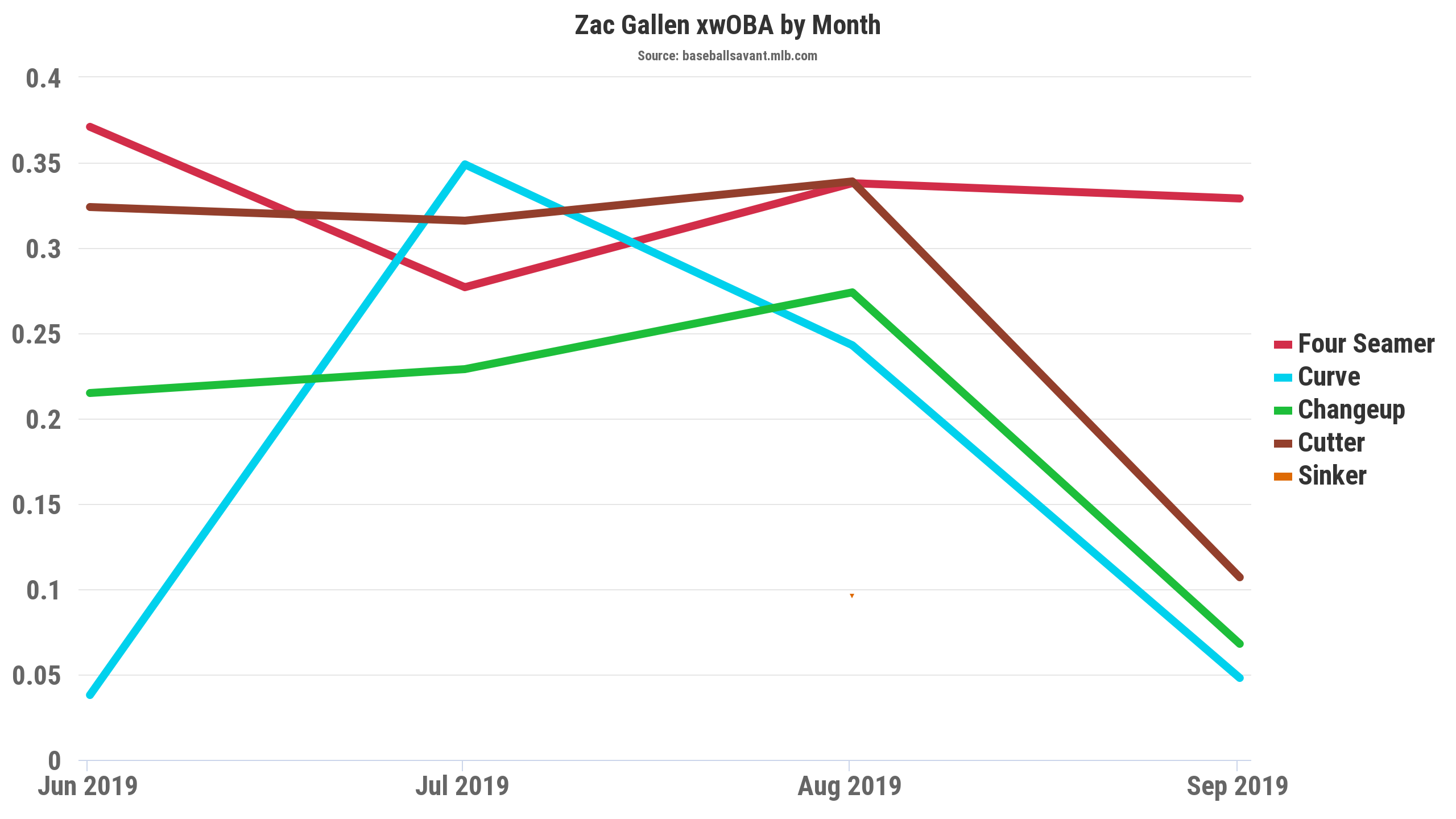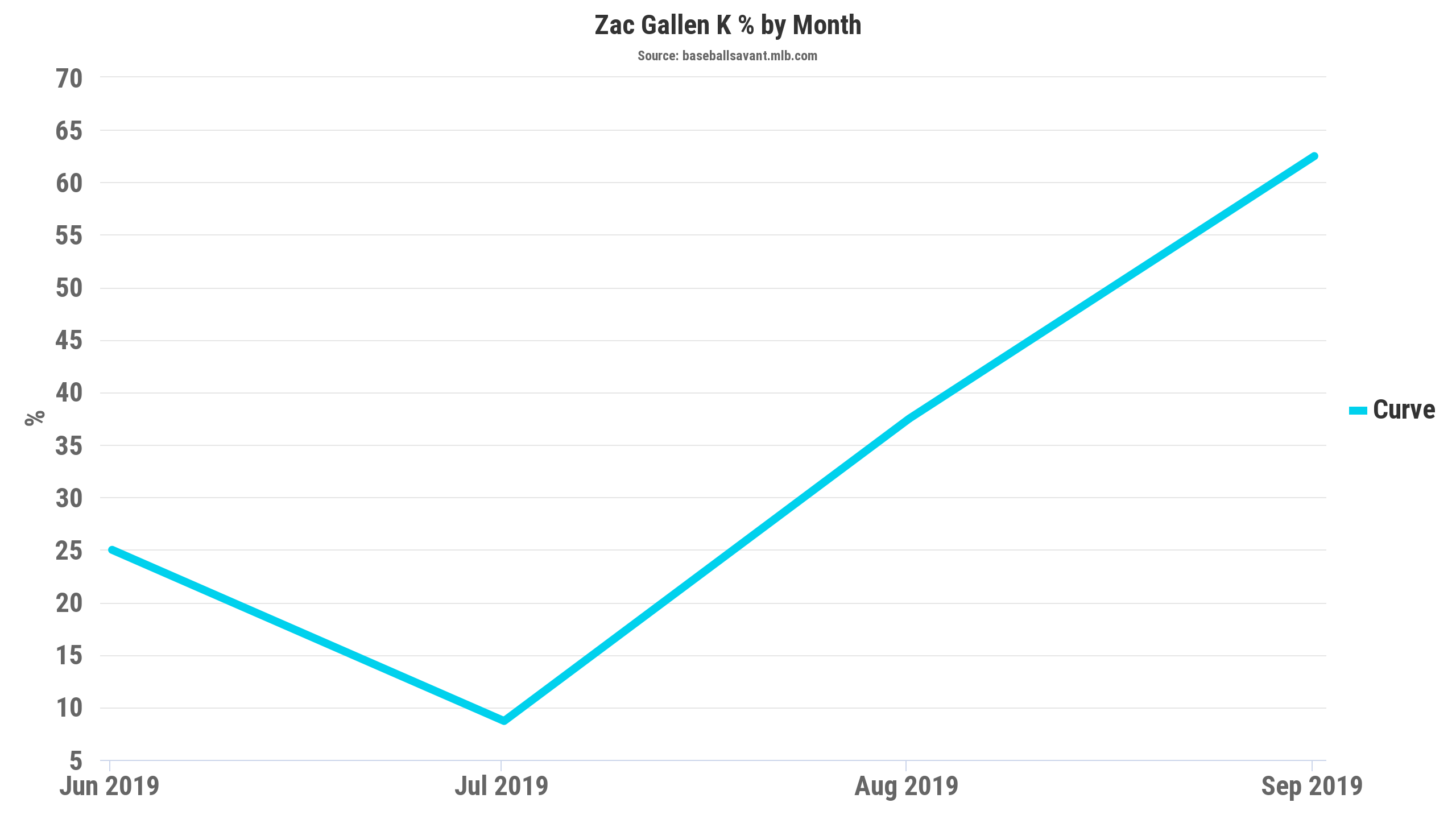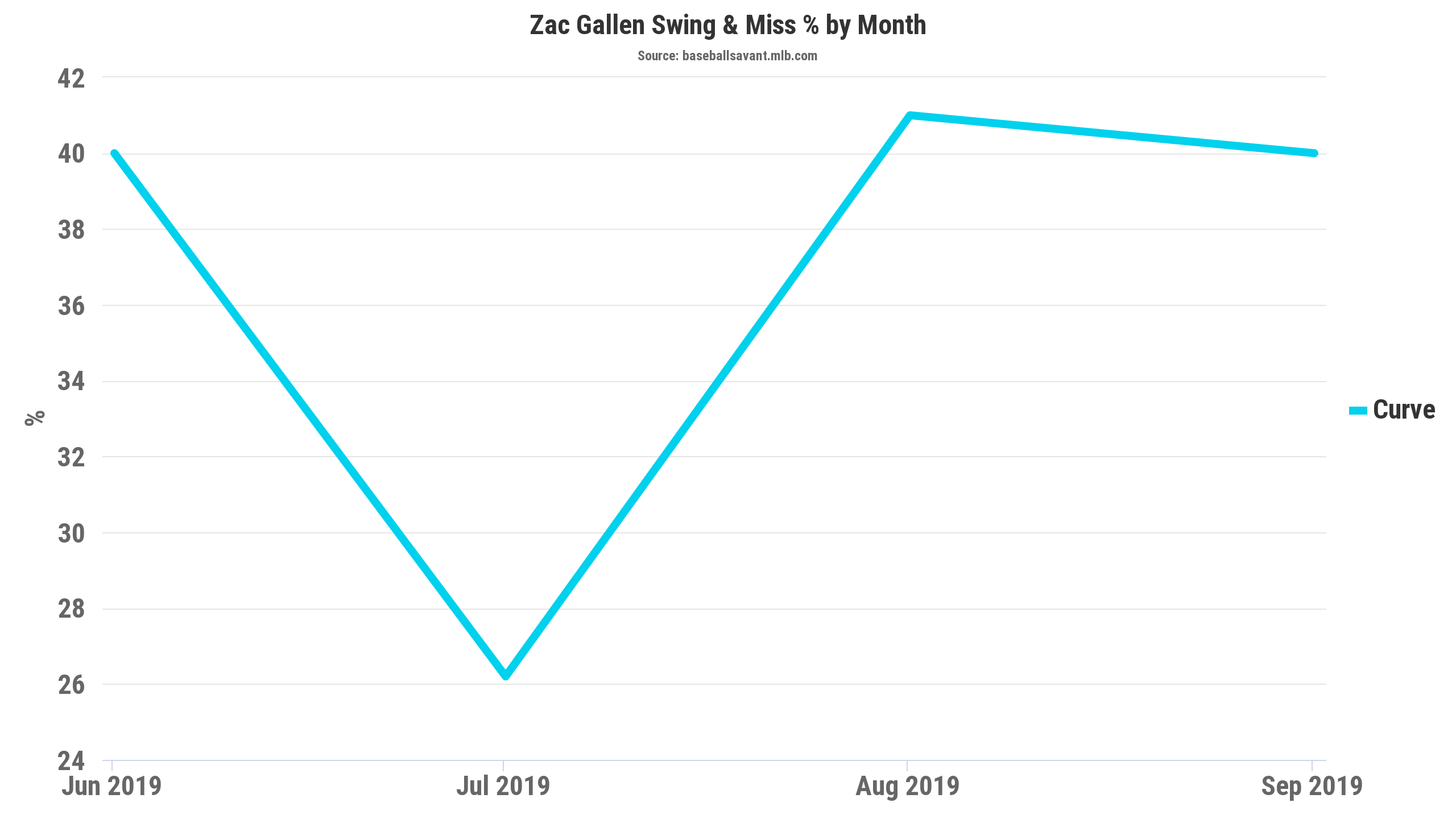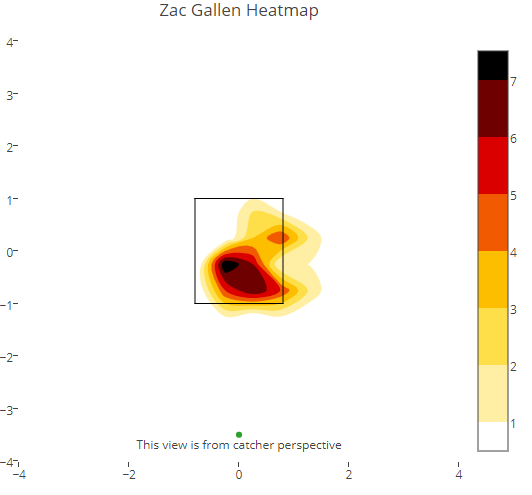July 31st, 2019 was an important day for the Arizona Diamondbacks franchise. It was no secret that the team was trying to rid themselves of as much of the Zack Greinke contract as possible, and they accomplished that goal when they sent him to the Houston Astros right as the deadline passed and received a pretty good haul of prospects, as the team continues its youth movement after trading Paul Goldschmidt to the St. Louis Cardinals in the offseason.
While this year’s trade deadline was pretty lackluster save for the Greinke trade, one of my favorite moves did happen earlier in the day. In a rare prospect-for-prospect trade involving the D-Backs and the Miami Marlins, the D-Backs traded shortstop prospect Jazz Chisholm to the Marlins for starting pitcher Zac Gallen. It might have seemed odd on the surface, but I think the move made sense for both teams, although who makes out better is something that won’t be answered for several years still.
Whatever you think of Chisholm as a prospect, you can understand Miami’s thinking here. Gallen gave them some good innings and showed a lot of signs of encouragement during his brief stint in Miami, but the Marlins, for all the negativity surrounding them, do actually have a plethora of young pitchers, and they didn’t have their shortstop of the future until acquiring Chisholm. But, if what we’ve seen from Gallen since he got to the desert is more of what we can expect for him going forward, then I think the Diamondbacks will be very happy with the trade and come out ahead when it’s all said and done.
Since he became a D-Back, Gallen has been truly excellent. With a 2.25 ERA and an outstanding 3.09 FIP in Arizona and a 2.50 ERA and 3.35 FIP for the entire season, there is a lot to be excited about with Gallen. The strong numbers with Arizona do come with a 3.77 xFIP and 4.10 SIERA, as he hasn’t given up home runs that those metrics expect him to because he is a fly ball pitcher. However, the 2.25 ERA is the eighth-best since August 1, and the 3.09 FIP is the seventeenth-best in the same time span, as Gallen’s performances have helped the once down-and-out and retooling D-Backs to make a late-season push for the National League Wild Card that’s led them past the Brewers, Phillies, and Mets and right on the doorstep of the Cubs. Whether the team makes the postseason or not, the season has been a success and Gallen is a pitcher that deserves our attention going into 2020.
The Fastball-Changeup Combo
Let’s talk about the type of pitcher Gallen is. One of the most interesting things about Gallen is that he’s had a lot of success with the fastball, despite it not being a particularly fast fastball. It sits just a touch under 93 miles per hour on average, which puts him in just the 30th percentile among pitchers, although he still gets whiffs at a pretty good rate. Among all pitchers who have thrown at least 500 fastballs and at least 1000 pitches total this season, Gallen’s 10.9% swinging-strike rate is above the 9.8% average, and above the roughly 9% average for just starting pitchers. That 10.9% swinging-strike rate is comparable to pitchers such as Mike Minor (11.0%), Zack Wheeler, Jack Flaherty (both 10.6%) and Noah Syndergaard (10.4%). His overall 31.5% strikeout rate on the pitch is well towards the top of the overall leaderboard and rivals some of the best in the game. Just looking at starters, Gallen is in some pretty exclusive company:
| Name | K% | SwStr% |
|---|---|---|
| Chris Sale | 44.5 | 12.7 |
| Gerrit Cole | 42.0 | 19.4 |
| Mike Clevinger | 40.7 | 14.0 |
| Brandon Woodruff | 40.6 | 12.6 |
| Charlie Morton | 37.3 | 12.0 |
| Max Scherzer | 34.6 | 15.1 |
| Chris Bassitt | 34.6 | 9.1 |
| Adrian Houser | 34.1 | 11.2 |
| Zac Gallen | 31.5 | 10.9 |
| Jake Odorizzi | 31.3 | 13.8 |
| Walker Buehler | 31.1 | 11.1 |
| Lucas Giolito | 31.1 | 12.6 |
| Lance Lynn | 30.7 | 13.7 |
This table shows some of the truly best pitchers in the game today, and just missing from this table because I didn’t want to make the table too big are Justin Verlander and Blake Snell, who also have strikeout rates just above 30% on their four-seam fastballs. While Gallen’s 10.9 swinging-strike rate on fastballs isn’t as impressive when you see other pitchers who are clearly superior at generating whiffs (seriously, Gerrit Cole is ridiculous), it wouldn’t be out of line to question whether Gallen can sustain such a high strikeout rate with a just slightly above average swinging-strike rate and low velocity.
There are two things, though, that make me confident that Gallen can keep getting results like this. The first is that his four-seamer is of the high-spin variety. His average fastball spin of 2377 revolutions-per-minute puts him in the 73rd percentile which is usually an indication of good swing-and-miss ability. The next thing though, that gets me excited is more than just spin rate. What I think makes Gallen’s fastball so strong is that it works well with a really good changeup:
This GIF, from Rob Friedman on Twitter, shows Gallen getting whiffs from Bryce Harper on his fastball and changeup. He puts the two pitches in nearly the exact same location and the tunneling effect looks to be what makes the combination of pitches work well. He actually gets the fastball up to 96 miles-per-hour on this one, near his maximum velocity on the season, and he is just oozing confidence here against a tough hitter in Harper.
That’s not a fluke either, here’s another overlay, this one coming during his time with the Marlins:
This GIF, from Lance Brozdowski on Twitter, might be better than the previous one. Again, the pitches are in roughly the same area of the plate, but the late changeup movement doesn’t leave James McCann a chance. Using the changeup to play off the fastball is how the pitch ends up as the best strikeout pitch in his entire repertoire. Here’s how he matches up against all starting pitchers:
| Name | K% | SwStr% |
|---|---|---|
| Luis Castillo | 46.8 | 27.7 |
| Jacob deGrom | 41.4 | 21.1 |
| Stephen Strasburg | 39.7 | 24.7 |
| Max Scherzer | 35.5 | 22.1 |
| Zac Gallen | 33.3 | 21.5 |
| Lucas Giolito | 33.1 | 22.8 |
| Cole Hamels | 32.5 | 25.5 |
Holy smokes. I was expecting Gallen’s changeup to be lethal, but not this lethal. And for whatever it’s worth, this is the second table now where Gallen shows up alongside Max Scherzer and Lucas Giolito, which is definitely not a bad thing. With a fastball and changeup that work well together and generate such a high amount of strikeouts and swinging-strikes, Gallen compares well to several elite starting pitchers. But for Gallen to get on to the same level as them when it comes to overall performance, he needs to have more than just two pitches. With that being said, let’s take a look at Gallen’s other pitches.
The Mystery Pitches
What will either push Gallen to the next level as a starting pitcher or hold him back as a pitcher is whether or not he develops a solid breaking ball. Gallen mainly throws two different breakers that are classified a bit differently by the main pitch trackers. Baseball Savant and FanGraphs believe Gallen throws a curveball and cutter while Brooks-Baseball says it’s a curveball and slider combination. While he definitely throws a curveball, we don’t quite know whether he’s throwing a cutter or slider. Whatever the case may be, it is crucial for these pitches to develop, but for right now, they’re mostly a mystery.
Let’s start with the curveball. The pitch is still a work in progress, but I do think it has gotten better in the past month or so. Prior to joining the D-Backs, the pitch was the worst in his repertoire by xwOBA, but since then it’s been his best pitch by xwOBA:

Keep in mind that Gallen has only made one start in September and that start was by far the best of the season for him, as he flirted with a no-hitter against the San Diego Padres, so don’t expect results like that to be consistent going forward. With that in mind, the improvement from July to August is very encouraging. The pitch had a .349 xwOBA mark in July and that dropped tremendously to .243 in August. That .243 number is exactly the same as what Sonny Gray produced in the same month as he continued his strong season. The improvements aren’t limited to just xwOBA though. A lot goes into xwOBA and part of what made the pitch better for Gallen is a jump in strikeouts:

And in swinging-strikes:

The pitch has really reached a new level since coming to Arizona in terms of strikeout rate and swing-and-miss rate. He’s also throwing the pitch a lot more as a D-Back—20.3% of the time to be exact, as opposed to 17.4% with the Marlins. I think he’s been more confident with the pitch, and as he’s gotten more confident, he’s trusting the pitch more and the pitch has gotten the best results it ever has for him. I mean, look at what this pitch is causing hitters to do:
Taking his worst pitch and getting it to be more than just a pitch thrown to just keep hitters honest is one thing, but it looks to be developing nicely and it’s still not his best, it doesn’t have to be. That’s mainly because he also has a cutter that could be an even better pitch, and maybe even his standout pitch.
It’s nice to have a curveball, especially an improving one, but the cutter (or maybe slider) that Gallen throws is a nice looking pitch. See for yourself:
And look at this beautiful pitch that fools Juan Soto:
Among all pitchers, Gallen’s cutter generates 7.1 inches of horizontal movement on average—which is second only to Phil Maton for the largest among pitchers who throw a cutter—while also getting 33.4 inches of vertical drop on average, good for ninth among pitchers in the same group. Here’s a full table with the leaders compared to Gallen:
| Name | Vertical Drop | Vertical Drop vs Average | Horizontal Movement | Horizontal Movement vs Average | K% | Whiff% | wOBA Against |
|---|---|---|---|---|---|---|---|
| Phil Maton | 42.2 | -9.4 | 10.6 | 7.4 | 17.6 | 29.0 | 0.333 |
| Yu Darvish | 36.5 | -6.8 | 5.7 | 3.2 | 29.4 | 31.1 | 0.247 |
| Brandon Workman | 31.7 | -5.2 | 4.3 | 2.5 | 26.7 | 44.0 | 0.225 |
| Zac Gallen | 33.4 | -4.5 | 7.1 | 4.3 | 21.4 | 26.1 | 0.327 |
Despite Gallen’s great movement on the pitch, he isn’t actually getting whiffs or strikeouts like Darvish or Workman, and that leads to a higher wOBA against (remember, we’re using Whiff% instead of SwStr%, so the number is higher). While it’s not one of the worst cutters in the game or anything, the pitch can definitely improve, because with movement like that the pitch should be getting more whiffs. I think the biggest reason why the pitch isn’t as successful as it could be is partly because of its location. Here’s the heat map for Gallen’s cutter:

That’s a lot of pitches in the heart of the plate, and when looking at pitches that Statcast describes as being in the “heart” of the plate (basically the centermost points in the strike zone), Gallen’s thrown 34% of his cutters in those areas. This trails only Collin McHugh for the most. For context, two pitchers that have gotten good results on their cutters such as James Paxton (19.2%) and Lance Lynn (24.9%) are both towards the bottom of the list. So, for Gallen to get better results on an already great moving cutter, he has to try and improve where the pitch is going, because I definitely want to see more like this:
Conclusion
Zac Gallen’s rookie season is going better than anybody could have predicted. While I can see why the Marlins wanted to trade for the Diamondbacks’ talented shortstop prospect Jazz Chisholm, I do wonder if they could have sent another pitcher to Arizona instead of Gallen. For the Diamondbacks though, as they go through this transition period, a period in which they’re still in the postseason fight, they could emerge with a nice-looking rotation, all in the same year they got rid of Zack Greinke.
There is a lot to like about the D-Backs’ rotation heading into 2020, with or without Robbie Ray, and it could turn them into sneaky contenders. Along with a hopefully fully-healthy Luke Weaver and Taijuan Walker and a potential ace in Zac Gallen, they also have young, controllable arms they received in the Greinke deal in Corbin Martin and J.B. Bukauskas, as well as those they have developed in Alex Young, Jon Duplantier, and Taylor Clarke. No baseball team has ever said they have enough pitching, and right now the D-Backs have more pitching than most teams do, and the staff could very well be led by Zac Gallen for a long time. I cannot wait to watch it unfold.
(Photo by Russell Lansford/Icon Sportswire)


I’m a Cardinals fan, living in South Florida, so I actually stunned the Marlins traded Zac. I’ve had him on my fantasy team since early in the year and I’ve been very pleased with how he’s done so far. He definitely doesn’t have the “look” of a stud pitcher but He’s quietly done a great job and I, too, am excited for his next season!
QQ: In a dynasty keeper league, would you keep SOROKA or GALLEN?
That is a tough question, I’m not really a dynasty player so take this with an extreme grain of salt, but if I had to pick only one, I think it would be Gallen, he’s just more the type of pitcher I personally prefer, but it is really close.
It’s tough, I like both pitchers and own both of them of my fantasy teams. Gallen gives you more strikeouts for sure, but Soroka is more about limiting hard contact which probably bodes well for his ERA. It honestly might be just a matter of preference right now. Both look like they’ll be great pitchers for a long time, it’ll be interesting to see who ends up better in the long run.